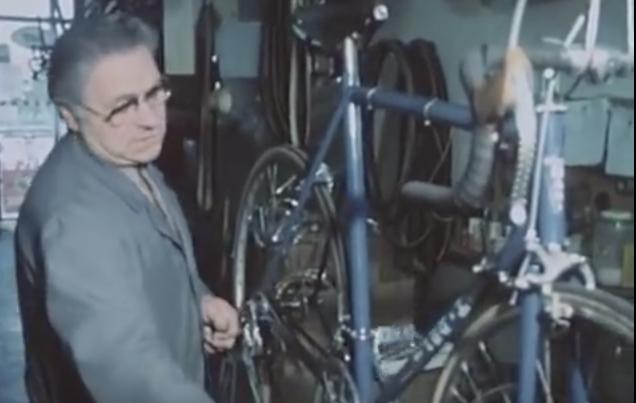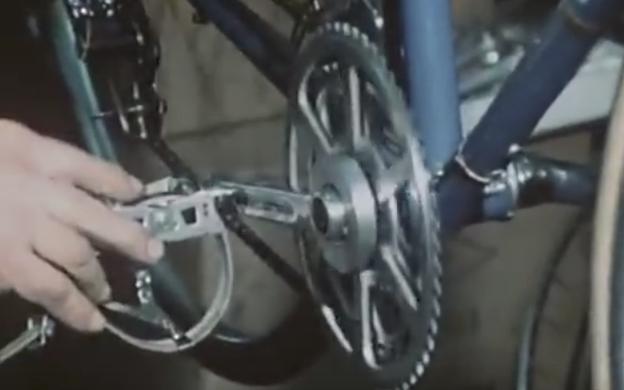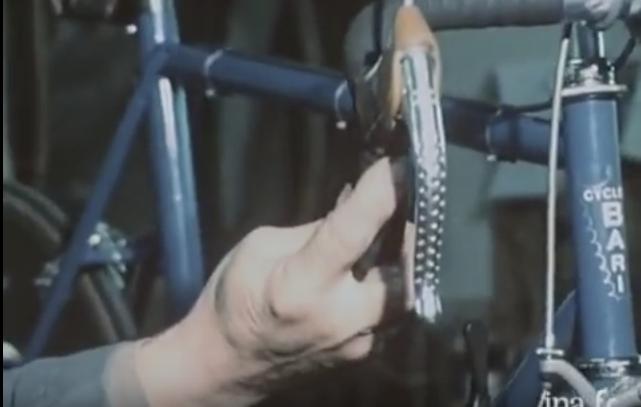- News
- Reviews
- Bikes
- Accessories
- Accessories - misc
- Computer mounts
- Bags
- Bar ends
- Bike bags & cases
- Bottle cages
- Bottles
- Cameras
- Car racks
- Child seats
- Computers
- Glasses
- GPS units
- Helmets
- Lights - front
- Lights - rear
- Lights - sets
- Locks
- Mirrors
- Mudguards
- Racks
- Pumps & CO2 inflators
- Puncture kits
- Reflectives
- Smart watches
- Stands and racks
- Trailers
- Clothing
- Components
- Bar tape & grips
- Bottom brackets
- Brake & gear cables
- Brake & STI levers
- Brake pads & spares
- Brakes
- Cassettes & freewheels
- Chains
- Chainsets & chainrings
- Derailleurs - front
- Derailleurs - rear
- Forks
- Gear levers & shifters
- Groupsets
- Handlebars & extensions
- Headsets
- Hubs
- Inner tubes
- Pedals
- Quick releases & skewers
- Saddles
- Seatposts
- Stems
- Wheels
- Tyres
- Health, fitness and nutrition
- Tools and workshop
- Miscellaneous
- Cross country mountain bikes
- Tubeless valves
- Buyers Guides
- Features
- Forum
- Recommends
- Podcast
TECH NEWS
 1970s motor doping3.png
1970s motor doping3.pngVideo shows hidden motor in 1970s steel racing bike
Have professional racing cyclists used hidden motors in the past?
It’s a question that has done the rounds on social media since the “mechanical fraud” incident at the Cyclocross World Championships last weekend when the UCI detected a concealed motor in Femke Van den Driessche’s Wilier race bike. Has this been going on much longer than any of us can imagine?
- Mechanical doping: All you need to know about concealed motor
Fabian Cancellara has faced questions as recently in 2010, but a video unearthed by Sporza reveals that hidden motors have existed since the 1970s. The short film from 1979 demonstrates a steel racing bicycle fitted with a hidden motor and batteries, revealing that such technology has existed for far longer than some of us might have realised.
The system works by powering a special set of cranks, rather than spinning the bottom bracket axle as with the more modern systems we’ve seen recently. The cranks appear to have a ratchet device that allows the cyclist to stop pedalling when in power assist mode. Bit of a giveaway, that.
It’s powered by two batteries tucked away inside the tubes of the frame. It’s said to provide about 45 minutes of assistance and a top speed of 45kph. So apart from the strange looking cranks, there’s nothing out of the ordinary about its appearance.
The motor is operated by a small button located on the drops, just behind the brake lever. You don’t even have to change hand position to turn the power on.
But just like the Vivax Assist and other similarly available devices, it was never intended for professional cyclists, instead for leisure and recreational cyclists seeking a bit of power assist on longer rides or steep climbs.
"I think this bike would be suited above all to a woman who wants to go for a ride with her husband, or disabled people or those with heart conditions,” says the engineer.
Of course, as we’ve seen in the past week, such technology can fall into the wrong hands.
So were any racing cyclists using this system in the 1980s? We doubt it. As you can tell from watching the video, it makes quite a racket. Modern systems are said to be much quieter. And we can’t imagine the primitive technology, especially those cranks, would have been light. But, as the events of last weekend proved, anything is possible.
David worked on the road.cc tech team from 2012-2020. Previously he was editor of Bikemagic.com and before that staff writer at RCUK. He's a seasoned cyclist of all disciplines, from road to mountain biking, touring to cyclo-cross, he only wishes he had time to ride them all. He's mildly competitive, though he'll never admit it, and is a frequent road racer but is too lazy to do really well. He currently resides in the Cotswolds, and you can now find him over on his own YouTube channel David Arthur - Just Ride Bikes.
Latest Comments
- BBB 2 sec ago
Stop beating a dead horse, people. This story isn't really about trans competitors but about the elected felon and his autocratic regime, targeting...
- Sredlums 51 min 40 sec ago
Contrary to what we are lead to believe, not everything is about e-bikes....
- brooksby 1 hour 9 min ago
Has it? Okay. TBH I was just trying to be funny by quoting FBs catchphrase back at them...
- Hirsute 2 hours 24 min ago
You've missed the bit where it's going to court.
- froze 2 hours 49 min ago
The Silca is not that great, if you go online to Silca and look at the scale they use it is very poorly designed with the readings far to close...
- froze 3 hours 1 min ago
I gurantee you this is happening to millions of products sold all over the world.
- froze 3 hours 34 min ago
Roughly about 66% to 75% of the flats that I get I can repair the tube without ever removing the wheel from the bike! This is an old trick I was...
- Secret_squirrel 5 hours 31 min ago
Surely Pog has souplesse in spades?
- chrisonabike 7 hours 18 min ago
It offers some left-hook prevention (good) and they have put some physical dividers in at the entrances / exits (also good) - but not everywhere. ...
- Oldfatgit 7 hours 25 min ago
Brexit is also why a lot of EU police forces issue on the spot fines.


Add new comment
1 comments
Bit noisy too.
Also - 45kph for 45 min with 70's battery and motor techology?? Perhaps on the rollers, but not on the road with a person on top.